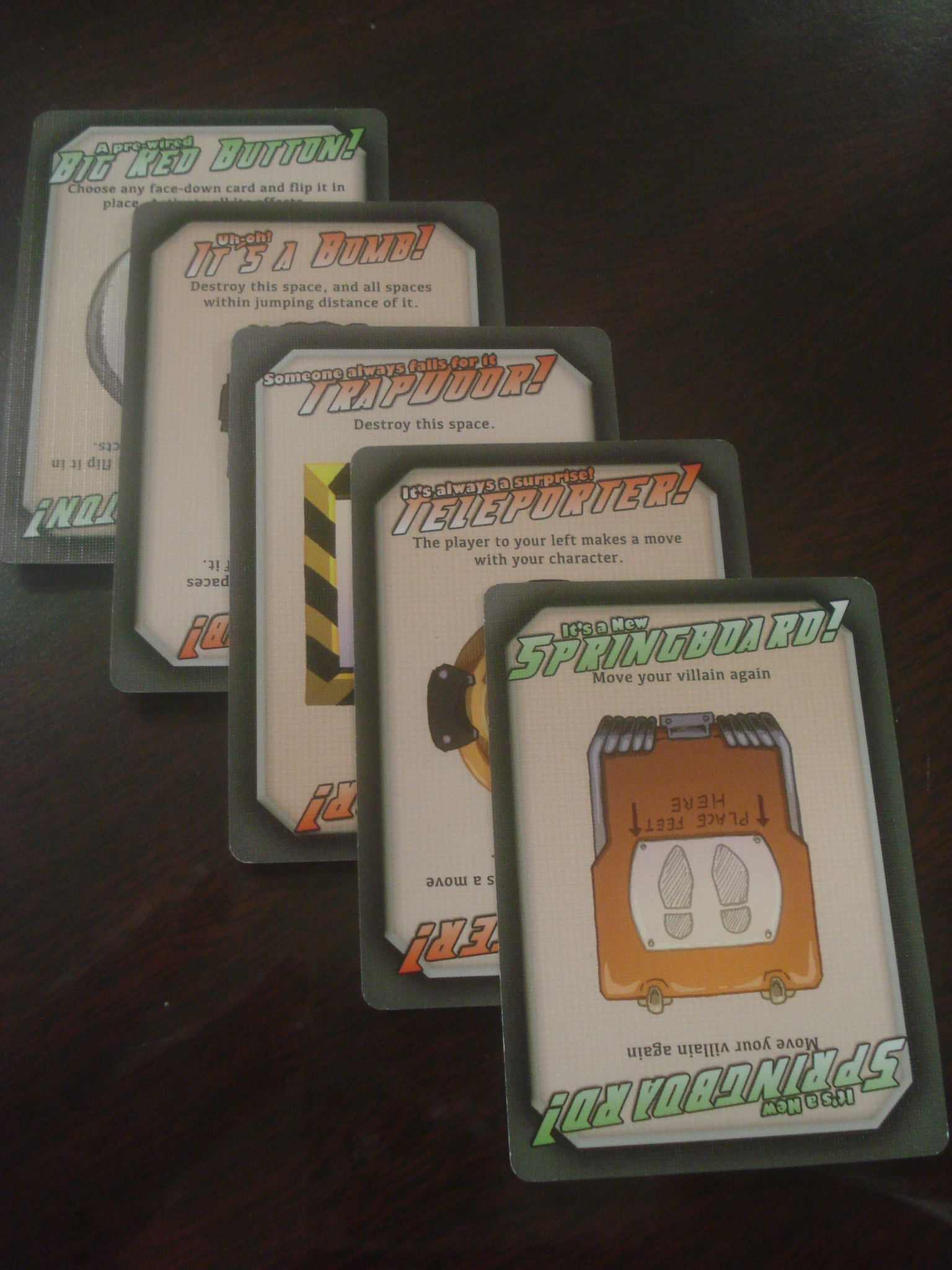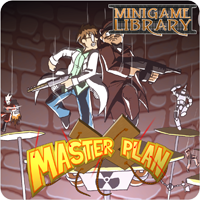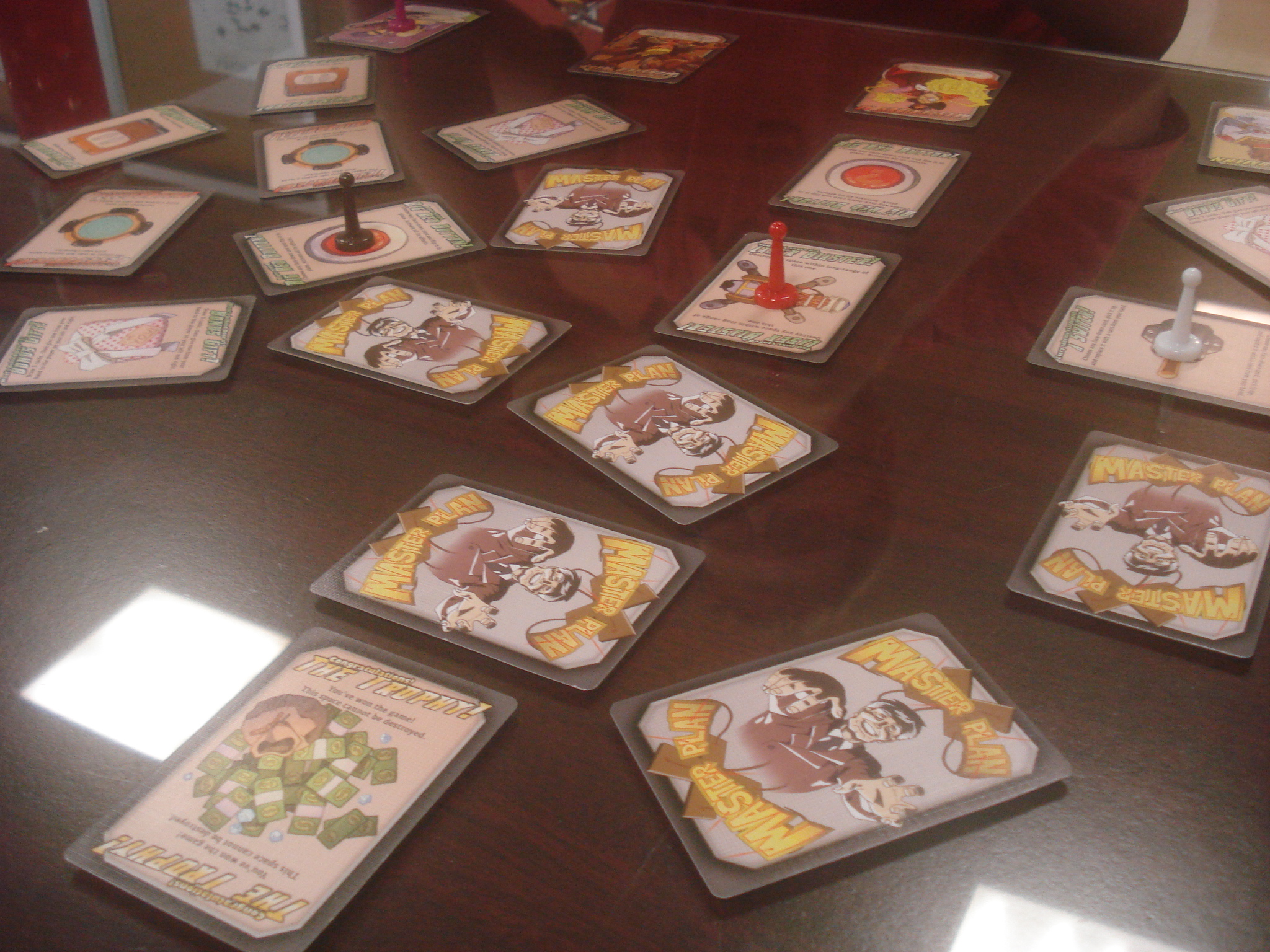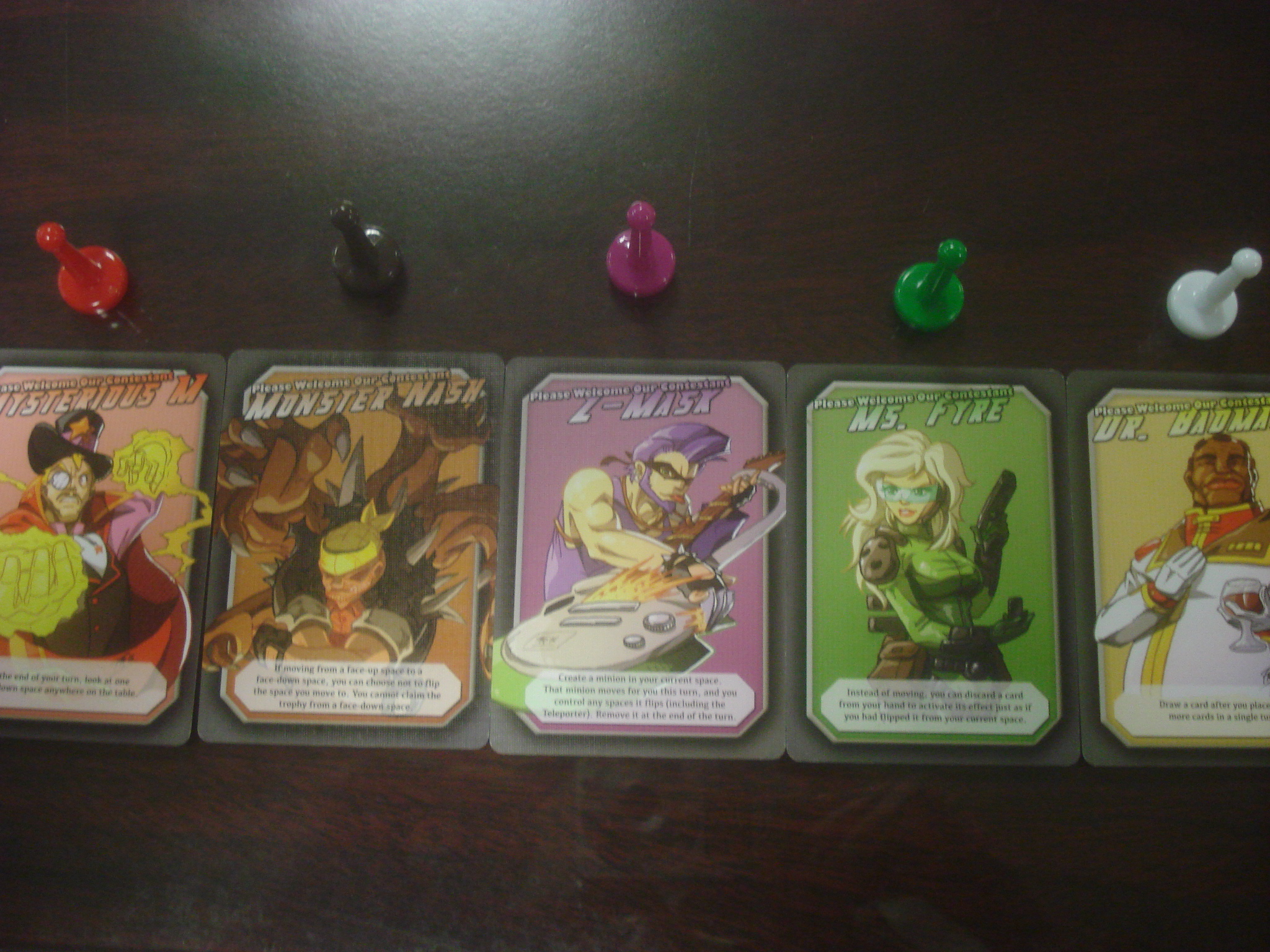| Publisher | Level 99 Games |
| Design Credit | D. Brad Talton Jr. |
| Art Credit | Fábio Fontes |
| Game Contents | Six player starting cards, six matching plastic colored villain pawns, 47 space cards, 1 trophy card, rules (part of The Level 99 Games Minigame Library rulebook) |
| Guidelines | Supervillain racing game |
| MSRP | $60 (for the complete The Level 99 Games Minigame Library) |
| Reviewer | Andy Vetromile |
When you’re an evil genius, someone has to foot all those bills until you become a force in your own right. Unless you intend to rule the world from your parents’ basement, you need a way out. You need a plan. You need a Master Plan. And how does anyone make it from obscurity to the big time these days? Reality programming, of course. Check your local listings for the biggest new game show on TV.
The object of the game is to get to the trophy first.
Three to six players play, well . . . players, on a game show giving away fabulous prizes called Master Plan. They just also happen to be villains armed with strange powers, a hand of cards, and a determination to win that borders on the sociopathic. The character cards, called starting cards, line up along one edge of the table, each with its matching colored pawn. The trophy card sits a couple feet away at the other end, promising a fully funded supervillain’s lair. In between is dead table space no one can cross until they have something to step on.
On your turn you can move your pawn to another card, called a “space” when it’s on the table, within “short” distance – that is, no further than the width of one card. Then add more spaces facedown. There is no limit to the cards you can play from your hand nor where they may be played. Eventually you want to move onto the Trophy card and claim your riches, but you can’t without using cards like stepping stones.
Moving to a facedown space flips it face-up and its effect is applied immediately. It may be good like a free move to the next space, perhaps, or a laser with which to destroy another space. Bad effects include teleporters under your opponent’s control or bombs to wipe out everything within “long” range. And what self-respecting supervillain doesn’t litter his path with trapdoors? If your space is destroyed you fall and anyone “killed” goes back to their starting card, to begin hopping anew. If the deck has to be reshuffled the show has entered sudden death overtime and now anyone upon whom disaster falls is out for good. First to reach the prize or, if the game achieves that level of lethality, the last villain still drawing breath wins.
There’s some fine artwork to be admired here, and the schematics of the various traps and effects aren’t fancy but they’re sharp and clear. Even better is the dramatic font and text telling you what the cards are and what they do. It feels like a circus run by a madman in marketing. The pawns are standard-issue plastic of the sort you get with Sorry! et al, but it’s obvious which pieces match which characters.

The supervillain equivalent of telling a pedestrian to go ahead and cross the street while you idle in your car
As for gameplay, there’s not a lot going on here, nor does there need to be. Master Plan is just what it advertises, a short, entertaining card game with bits of strategy and a good sense of humor. From the character descriptions to the advice they give to the frenetic uncertainty of every card one steps on, the game is a giddy little thrill. Players need spaces to move but even a trail of benign ones might get stolen or replaced. Without limits on card placement someone can lay a series of booby-traps in front of the finish line or even hem a foe in on his own starting card with a row of something deadly – or something they claim is deadly. Mixing things up further are villains’ special abilities, like Monster Nash’s power to not activate spaces he occupies or Mysterious M’s sneak-peeks at cards, and these can turn the interference of others around.
Part of The Level 99 Games Minigame Library, Master Plan is a great exercise in groupthink with a bit of bluffing and card memorization thrown in. Whether forcing someone to take a long route to victory or borrowing their path to make headway for yourself, decisions are nerve-wracking. Card management is important, too: You can place all the cards you want but you only draw one back. Blowing through cards quickly brings about the endgame when you’re in the lead, but overtime removes your safety net. You can sabotage others or plot a circuitous end-run to the trophy. No plan, as Moltke and co. said, survives contact with the enemy, and that deliciously includes Master Plan.



